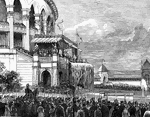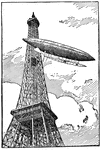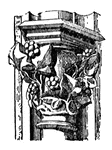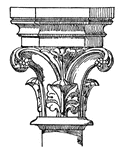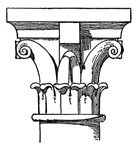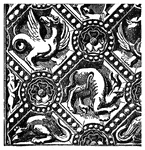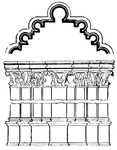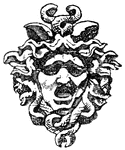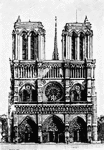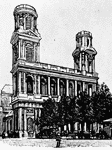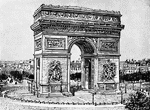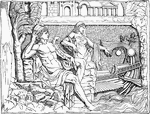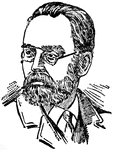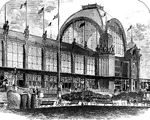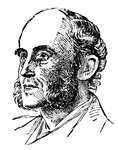
John R. Green
(1908-1989) Bandleader, pianist and composer in charge of many successful MGM movies such as Easter…

Paris
Ancient Greek Mythology. Paris begins the Trojan War by kidnapping Helen of Troy, the most beautiful…

Band Motif
Romanesque ornament from an evangeliarium written for Charlemagne, 8th century, Library of the Louvre,…
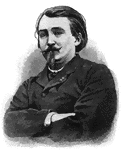
Gustave Dore
A French artist, born Strasburg, Alsace-Lorraine, Jan. 10, 1833; died in Paris, Jan. 23, 1883.
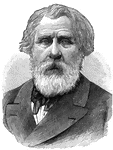
Ivan Sergyevich Turgenieff
A Russian novelist, born at Orel, Nov. 9, 1818; died at Bougival, near Paris, Sep. 3, 1883.

Petit Palais
The Petit Palais (Small Palace) is a museum in Paris, France. It was built for the Universal Exhibition…
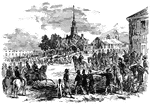
Kentucky Raid
"The raid in Kentucky- the Confederate Morgan with his guerillas bivouacking in Courthouse Square, Paris,…

Paris
"Paris, capital of Bourbon County, situated on Stoner Creek, Ky., occupied by Morgan's Guerrillas in…
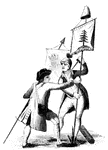
Pine-Tree Flag
"The Pine-Tree Flag. This engraving is a reduced copy of a vignette on a map of Boston, published in…

Dining-Hall
"The dining-hall, or room with seven doors. In the December number of the New York Mirror for 1834,…
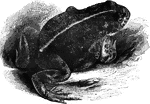
Natter-jack toad
"Resembles the common toad of Europe in appearance: there are also other foreign species, among which…

Bastile Key
"Key of the Bastile. This key of the old Paris prison known as the Bastile, was sent by La Fayette to…

Ampullaria dubia
"The A. dubia is found in the Nile. Several of this genus, brought from Egypt to Paris packed…

Charlemagne
"Statue of Charlemagne, in Paris. At Pepin's death in 768 the kingdom of the Franks included the greater…
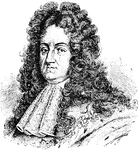
Louis XIV
"The age of Louis XIV. during the reign of Louis XIV, the son and successor of Louis XIII (1643-1715),…
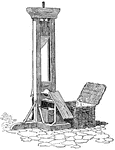
Guillotine
"The guillotine was used during the Reign of Terror of the French Revolution. Now that the power of…

Catacomb Grave
"Catacombs are caverns, grottoes, and subterraneous caves, destined for the sepulture of the dead. The…

Armor
"Complete suit of Plate-Armor, now in Paris, date about 1440- the epoch of greatest perfection of defensive…

Eiffel Tower
"The Eiffel Tower is a notable structure in Paris, France. The plans for the Paris exposition of 1889…
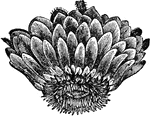
Victoria Regia
"Victoria Regia, named by Lindley after Queen Victoria, is the most magnificent of all known water lilies,…
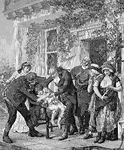
The First Vaccination
"This picture is based upon a photograph of a painting exhibited many years ago in the Paris Salon.…

Louvre West Pavilion
"Louvre is the name of a celebrated public building of Paris, situated in the N. part of the city, near…

Doctor
"This striking picture, by a celebrated French artist, has excited marked attention ever since it was…
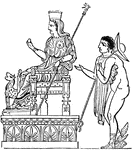
Thrones
"The following wood-cut from a fictile vase in the Museo Borbonico at Naples, represents Juno seated…
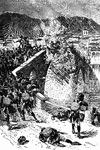
Montserrat
Expedition of Montserrat. In 1782, during the American Revolutionary War, France briefly captured Montserrat…
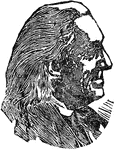
Franz Liszt
A pianist and composer, born in Rading, Hungary, Oct. 22, 1811; died in Baireuth, Oct. 31, 1886. He…
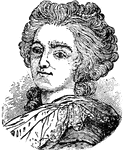
Marie Antoinette
Queen of France and Archduchess of Austria. she was the daughter of the Holy Roman Emperor Francis I…
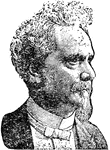
Victor Rocheport
A journalist and statesman, born in Paris, France, Jan. 30, 1830. After attaining a liberal education,…
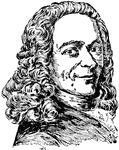
Voltaire (Francois Marie Abouet)
An eminent author, born in Paris, France, Nov. 21, 1694; died there May 30, 1778.

Jeanne Roland
The wife of Jean Marie, and herself the spirit of the Girondin party; the daughter of a Paris engraver;…

Arcade
"In street architecture a covered way or passage, either open at the side with a range of pillars, or…

Kneading Machine
"A kneading-machine of a highly approved form, used in the great Scipion bakery of Paris, the invention…


